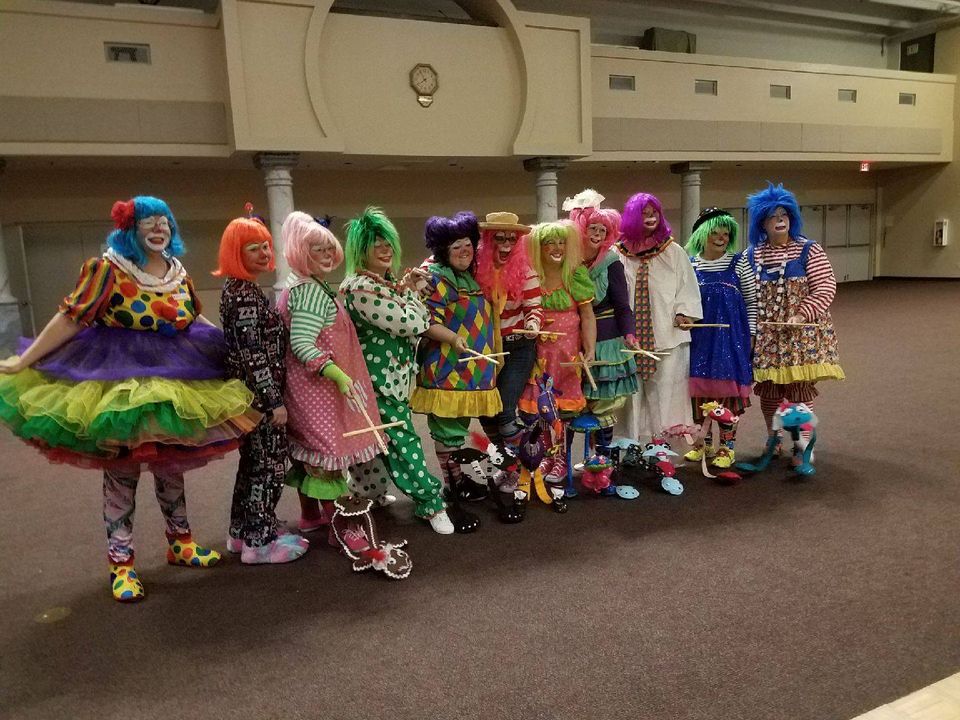All Occasion Performers - The Facts
Table of Contents7 Simple Techniques For All Occasion PerformersAll Occasion Performers Fundamentals ExplainedThe Of All Occasion PerformersMore About All Occasion Performers3 Simple Techniques For All Occasion Performers
He specialized in pigs and mules, which he educated and sold to other clowns. He additionally presented an act with a qualified rhinoceros and is the only person in circus history to offer a tightrope strolling elephant.He was additionally a philanthropist that gave kindly to many charities and he set up the first monolith to soldiers killed during the Civil War - Party clown. Origins of the Auguste characterThere is a commonly told legend concerning the origins of the Auguste clown. According to the tale, an American acrobat named Tom Belling was executing with a circus in Germany in 1869
Belling took off running, finishing up in the circus arena where he dropped over the ringcurb. In his embarrassment and rush to leave, he dropped over the ringcurb again on his way out. The supervisor regulated that Belling continue appearing as the Auguste.
What Does All Occasion Performers Mean?
For one point, words Auguste did not exist in the German language up until after the character became preferred. One of the concepts of the actual origin is that Belling duplicated the character from the R'izhii (Red Haired) clowns he saw when he toured Russia with a circus (https://www.blogtalkradio.com/all0ccperf0rm). Characters like the auguste certainly existed previously

The dance later on became recognized as tap dancing. It needs to be kept in mind that there are alternate 'origins' for the tramp personality"one of which was the traveling "hoe kids," or itinerant ranch employees, who rode the rails from one community to an additional, wiping the residue far from their eyes & mouth.
See This Report about All Occasion Performers
Note that the fright wig, overstated lips and eyes, extra-large apparel and props of the American clown, props such a soda water, packed clubs, exploding stogies, and whistles loaded with soot, are not Grimaldi's. They belong to Tambo and Bones. The English blackface comic Charles Mathews came to America in 1822 to do and researched black life and custom-mades.
No one knows where the mummers' plays and Morris dances originated from. In such plays there is a collection of personalities consisting of "kings" and "saints", cross-dressing, and blackface roles; the faces of Morris (or "Moorish") dancers were also blackened. The mummer's plays were not for fun. A lot of were carried out by poor guys in the starving time after Xmas.
If refuted, they would rake the offender's backyard. The Derby Play of the Tup was carried out for food and beer by unemployed youths. This use of blackface for political action camouflaged as home entertainment continued America when the offspring of these males blackened their faces to oppose taxes. One such demonstration has entered American background as the Boston Tea Ceremony.
The Single Strategy To Use For All Occasion Performers

While not the luxurious affairs we consider today, some early, rougher types of traveling find more circus were prominent in America from Revolutionary times-- George Washington was a follower. Blackface clowns carried out in them from at least the 1810s and possibly prior to; they were a staple by the 1820s. The large red or white mouth repainted on by modern clowns is a residue of the blackface mask.
The blackface mask was a clown's disguise, exaggerating the face functions into a cartoon, a caricature. The blackface clown may be the forerunner of today's anodyne circus clown, yet or else the 2 are as opposite as blackface and whiteface.
The Definitive Guide to All Occasion Performers
Who in nineteenth-century America was more of an Aside from the ? What far better mask than blackface? In lots of practices the clown would show some physical defect, like a hunchback, dwarfism-- or like Jim Crow, lameness - Stilt walkers near me. And since he was various, an Others, the clown was allowed to state and do points nobody else could.
Witticism and parody were central to minstrelsy. It's interesting that in the West African cultures where most slaves came, the poet-singer griot served the exact same ridiculing jester feature when the celebration occurred. That may have something to do with the interested (to us, looking back) ease with which Southern Blacks accepted not just the songs but even the undermining humor of minstrelsy.

Emmett Kelly was the most effective recognized tramp clown with his personality "Weary Willie."Vagrant clowns are skilled: + jugglers + magicians + pianists + chalk talk musician + bikers. There enjoy vagrants and angry vagrants. There appears to be a wide array of vagrant clowns - https://www.anyflip.com/homepage/nhfkt#About. The most standard aspect of tramp clowns is that absolutely nothing is standard except the white mouth, which was obtained from minstrel blackface make-up.